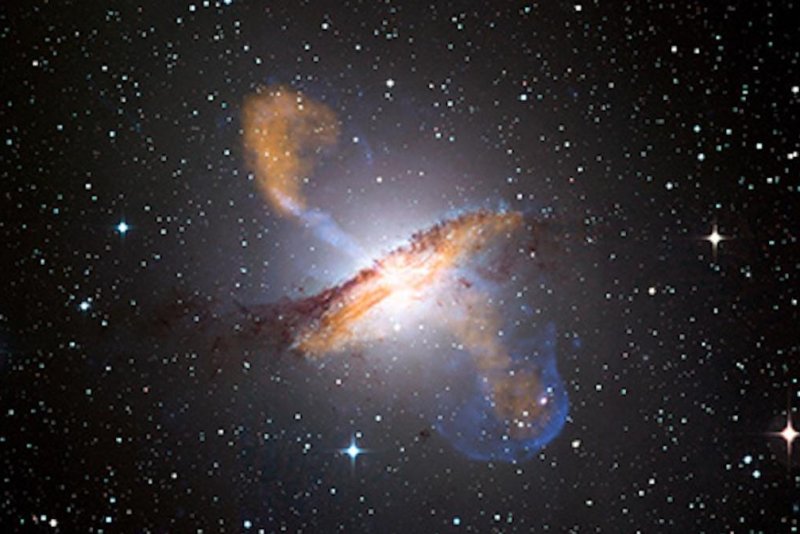Centaurus A is home to a powerful supermassive black hole, one of the active galactic nuclei closest to Earth. The image shows the black hole's intense energy radiating outward. Photo by UCSC/ESA/NASA
Jan. 2 (UPI) -- New research confirms supermassive black holes play an important role in controlling star formation in large galaxies.
Astronomers had shown in theory -- and in computer models -- that black holes and star formation rates are directly linked, but had been unable to confirm their simulations with observational evidence. Now, they have proof.
"We've been dialing in the feedback to make the simulations work out, without really knowing how it happens," Jean Brodie, professor of astronomy and astrophysics at the University of California, Santa Cruz, said in a news release. "This is the first direct observational evidence where we can see the effect of the black hole on the star formation history of the galaxy."
Researchers published their evidence this week in the journal Nature.
Lead researcher Ignacio Martín-Navarro, a postdoctoral researcher at UC Santa Cruz, characterized the history of star formation in several galaxies by analyzing spectral properties observed by the Hobby-Eberly Telescope Massive Galaxy Survey. Previous studies had also determined the mass of the supermassive black holes found at the center of each of the surveyed galaxies.
When Martín-Navarro and his colleagues compared stellar formation histories with black hole masses, they found a strong correlation.
"For galaxies with the same mass of stars but different black hole mass in the center, those galaxies with bigger black holes were quenched earlier and faster than those with smaller black holes," Martín-Navarro said. "So star formation lasted longer in those galaxies with smaller central black holes."
Quenching describes the process by which galaxies shut down star formation. Astronomers believe black holes encourage quenching by heating up stellar material and preventing it from condensing into new stars. The energy of supermassive black holes can also blow gas and dust away.
When supermassive black holes are actively feeding -- gobbling up material, producing intense accretion disks and triggering outbursts of high-energy particles -- they're known as active galactic nuclei.
Previous attempts to link active galactic nuclei and stellar formation have failed. Astronomers suggest the highly variable nature of active galactic nuclei could explain the failure.
The latest research showed black hole mass is a more stable and reliable measure for gauging the energy of a supermassive black hole and its effect on star formation.
Despite the confirmed correlation, researchers are still uncertain on how exactly the energy of supermassive black holes encourages quenching.
"There are different ways a black hole can put energy out into the galaxy, and theorists have all kinds of ideas about how quenching happens, but there's more work to be done to fit these new observations into the models," said Aaron Romanowsky, an astronomer at San Jose State University and UC Observatories.















